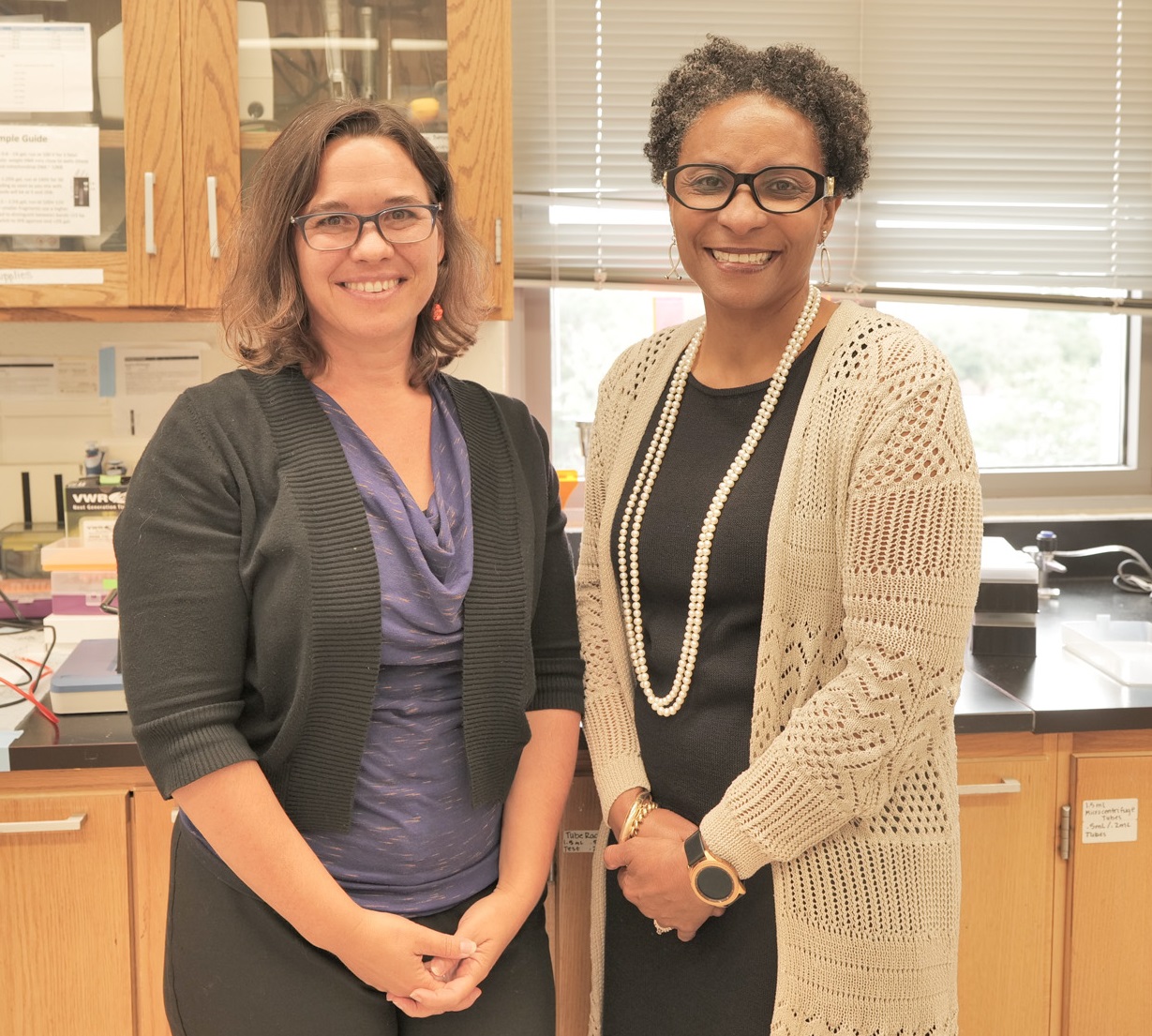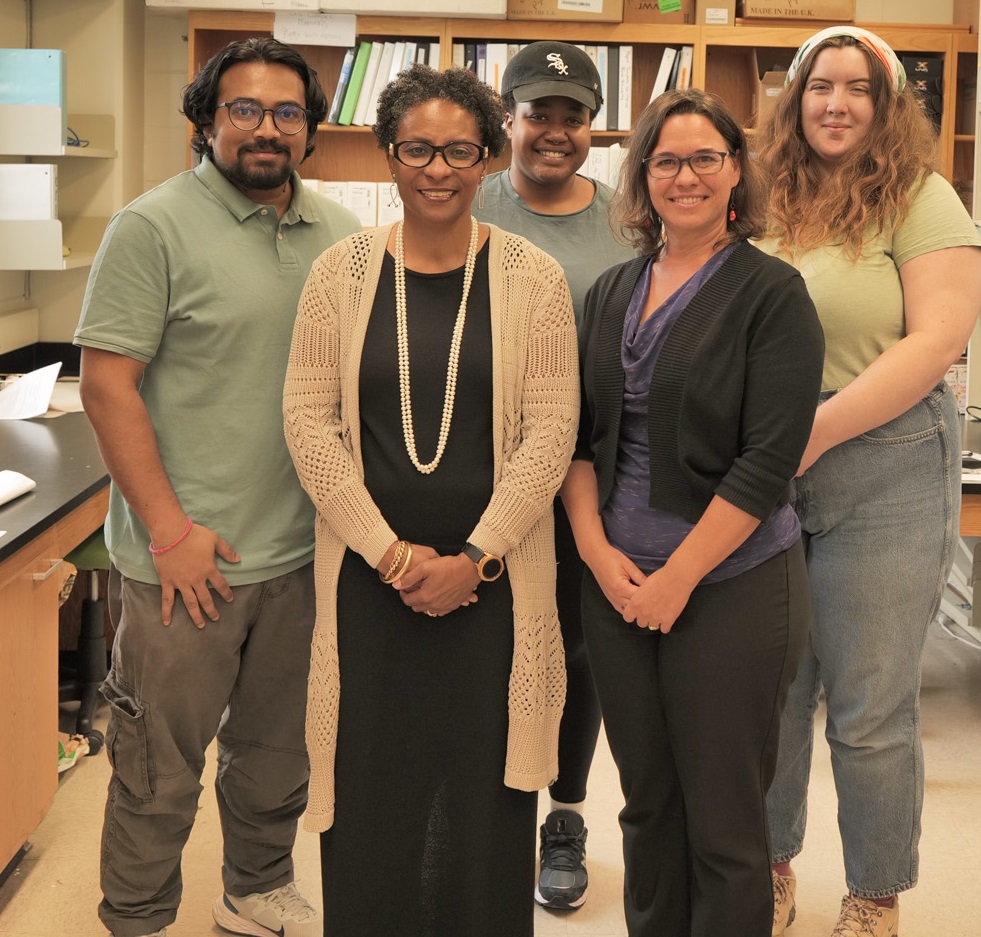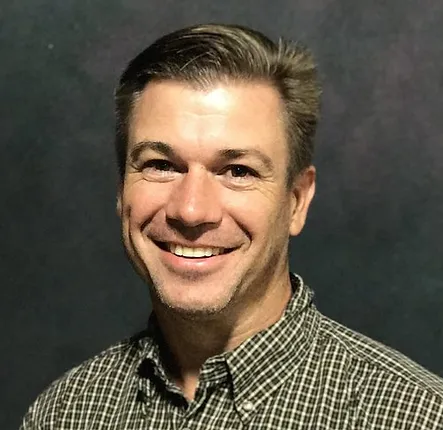COSAM News Articles 2023 August NSF awards Auburn’s COSAM and College of Education $1 million to research how body size and reproduction evolve in the natural environment
NSF awards Auburn’s COSAM and College of Education $1 million to research how body size and reproduction evolve in the natural environment
Auburn University’s Tonia Schwartz, an associate professor in the Department of Biological Sciences in the College of Sciences and Mathematics (COSAM), and Melody Russell, professor of science education, and Endowed Alumni Professor in the College of Education, are the recipients of a four-year award from the National Science Foundation (NSF) in collaboration with David A. W. Miller, associate professor in the College of Agricultural Sciences at Pennsylvania State University, and Amanda Sparkman, associate professor of biology at Westmont College.
The award provides Auburn University with $1,073,793 of funding from the NSF with a total of $2.1 million for the entire award across all three institutions. The grant will enable more than 30 undergraduate and graduate students as well as postdoctoral scientists and teachers to be part of this NSF funded research project.
The team aims to understand how body size traits and reproduction characteristics are connected by studying five reptiles that have naturally become smaller living in isolated habitats on the California Channel Islands, in this project “How to get SMAL: Studying island dwarfism to find Shared Molecular mechanisms Across Life history traits”.
“The beauty of this research is that nature has already conducted the experiment for us, many times. Animals get stuck on islands and over many generations they evolve to adapt to their new environment, often changing their body size,” said Schwartz. The research team will harness the power of one of these natural experiments where three species of reptiles (two snakes and a lizard) have each independently evolved small body size on the California Channel Islands relative to populations on the mainland California, in contrast to two species of lizards did not change in body size when isolated on the islands. They will be conducting field work with the animals both in mainland and the islands. The California Channel Islands are in the Pacific Ocean and are a protected area. None of the animals will be removed from their natural habitat during the research.
In addition to the animal research, another key aspect of this project is the involvement of Alabama high school biology teachers who will visit the Channel Islands to engage in the research with the project team. “This unique informal science education experience provides an excellent opportunity to expand science teacher content knowledge while engaging preservice and in-service science teachers in valuable outreach experiences,” said Schwartz.
“This is a phenomenal partnership,” said Russell. “This NSF funded, collaborative project will provide an innovative curriculum aligned with science teaching standards that promotes engagement and interest in STEM for the science classroom. This project also aims to broaden participation in STEM through enhanced teacher professional development and an inquiry-based science curriculum.
This research project also includes COSAM STEM Outreach Center (Mary Lou Ewald) a partner with Alabama Math, Science, and Technology Initiative (AMSTI) and Alabama Science in Motion (ASIM).
”Biology specialist, Roger Birkhead with ASIM, will be instrumental in helping us connect this research to the Alabama classrooms through working with teachers,” said Schwartz.
“We will design science curriculum modules that ASIM will implement during various outreach opportunities and programs to engage current science teachers, and these modules can also be used with our preservice science teachers in our teacher education program,” said Russell. “This project will provide invaluable experiences and opportunities to better prepare our future science teachers.”
The research in the field is led by collaborator Sparkman, with assistance from students from all three institutions. With the use of a portable ultrasound, they can measure the number and size of eggs in the animals and determine the reproductive cycles of the populations across seasons and years.
The team also collects blood samples taken from the animals and tissue biopsies to send back to Auburn. “The tissue is used to develop cell lines from the mainland and island populations, so we can study them at the cellular level without bring the actual animals back to the lab”, said Schwartz.
“We will be able to measure important factors such as the blood glucose and hormones of the reptiles that directly link to its growth and metabolism,” said Schwartz. The research team is particularly interested in the function and evolution of the insulin-like signaling network. These factors are vital to unlocking information about how the species evolve on the island.
“We will be sequencing the genomes to learn more about what has happened to this species over time, and we will search for genes that have evolved the fastest between the mainland and island populations. This will help us identify what genes are needed to adapt to island life through changes in body size and reproduction,” said Schwartz.
The molecular data on the genetics, the cell metabolism, and the hormones produced in the animals will be compiled by collaborator Miller into statistical models to understand their relationships to the life history traits such as growth rates, body size and reproduction factors.
“This research will give us insight into the molecular mechanisms of how growth and reproductive traits evolve in natural environments with real-world applications to human health, agriculture and conservation,” said Schwartz.
This project poses exciting opportunities and we are all looking forward to all the possibilities this project will provide Auburn University, Pennsylvania State University, and Westmont College.
Latest Headlines
-
07/09/2024
-
Summer Bridge Program celebrates 21 incoming Auburn students as they prepare for future STEM careers07/02/2024
-
07/02/2024
-
06/17/2024
-
06/07/2024



